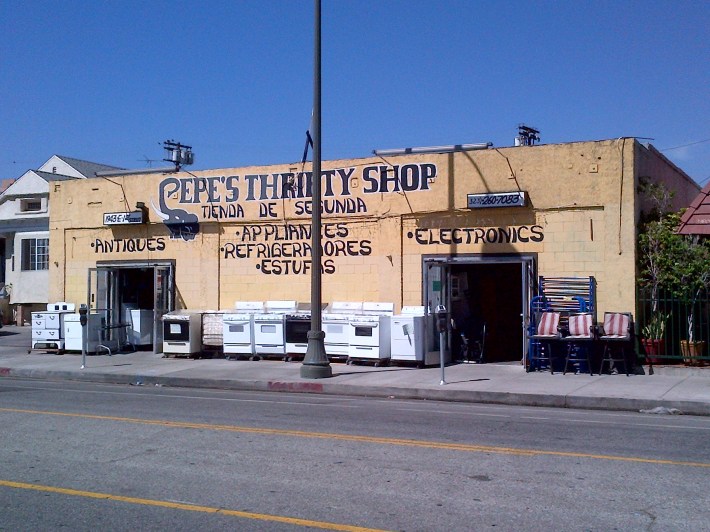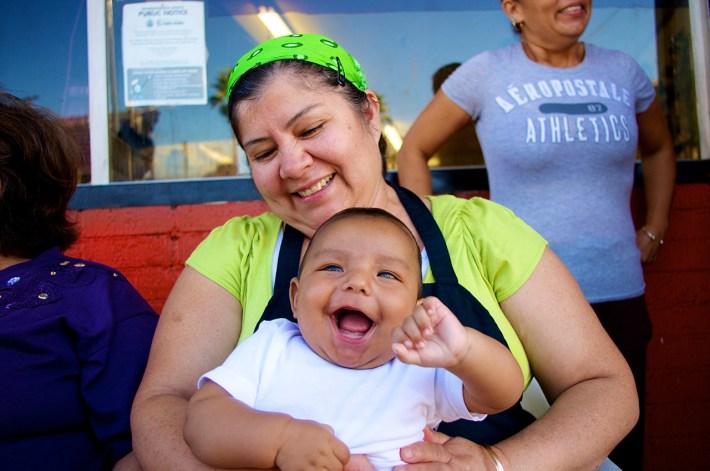
CicLAvia! Bicycles! Hipster Invaders! Gentrification!
Made you look!
Probably provoked some strong emotions, too, given the way recent headlines (see here, here, here) in asking whether activities assumed to be the purview of "hipsters" could be compatible with lower-income communities, have inadvertently re-ified the "us vs. them" framing that guides too much of the conversation on gentrification.*
Very little productive dialogue tends to come of that approach, regardless of how well-intended the question is. For one, it is incredibly effective at enticing all the angry, underwear-clad racists, classists, and all-around terrible people with Internet access out of their caves. But even among those who seek a more elevated debate, that framing almost guarantees that the highly complex issues surrounding community transformations will devolve into unpleasant wranglings over who has the right to make claims on a place based on creative interpretations of history and sweeping generalizations about "culture."

That is not to say that bike lanes, bicyclists, CicLAvia, or even "hipsters" aren't touchstones in gentrification debates. The gentri-flyer heard 'round the world (at right) made clear that they certainly are.
But, as I tried to illustrate in the stories penned on the storm the flyer generated (here, here), it's not those things, per se, that provoke such a strong reaction. It's the processes and power structures they represent.
In other words, people are often looking at current efforts to engage their communities in the context of the long history of discrimination, deliberate disinvestment, displacement, and exclusion from the planning processes those communities have endured and asking where they fit.
From that perspective, it becomes easier to see how residents with a lengthy list of unaddressed infrastructure and other needs might wonder exactly who lower-priority concerns like bike lanes (or an event like CicLAvia, staged in their community by non-residents) were intended to benefit. Particularly since investment often seems to not be directed at a marginalized area until after turnover is already underway and developers appear prepared to "ride the wave of increased gentrification"** by snapping up homes, apartment buildings, and retail sites.
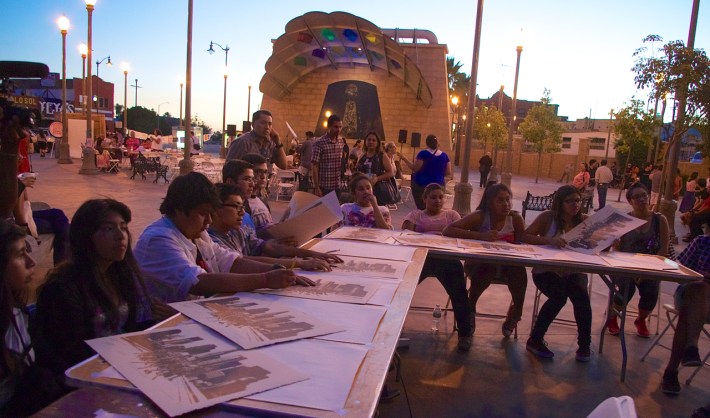
Of course, none of this means that people don't want to see investments, improvements, events, or even "outsiders" in their communities. On the contrary -- a number of the small business owners I've spoken with feel that more investment in the area and greater exposure to a wider customer base are necessary for them to survive and flourish.
They would just prefer that when that happens, investments will be directed at existing businesses and local entrepreneurs so they can grow and adapt to a changing landscape, the community will be treated as a partner in planning, development will be respectful of the character, history, and culture of the area, improvements will address the needs and aspirations of the long-time residents -- especially those on the margins, and the existing residents' ability to remain in their homes will be safeguarded so they can reap the benefits of any growth or change that results from that process.
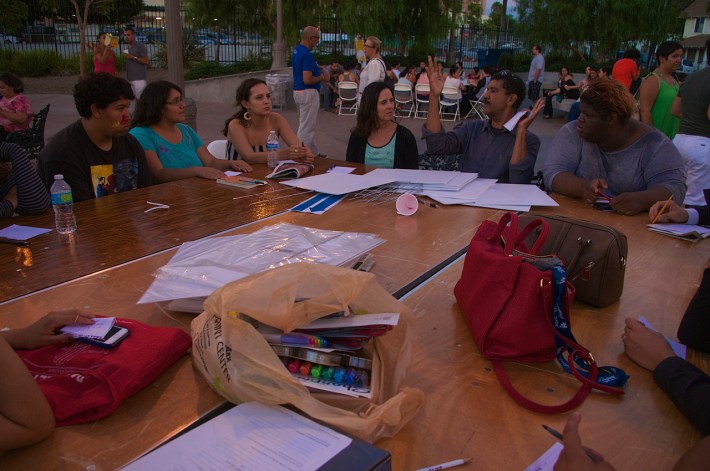
So, some of the community's stakeholders are hoping to help visitors and city officials to see the value of that approach by inviting participants to explore the length of 1st St. during this weekend's CicLAvia, get acquainted with the small businesses, and learn about how culture, history, food, and family play into their vision for the future of their community.
They're going to make it super-easy for everyone to do so, too.
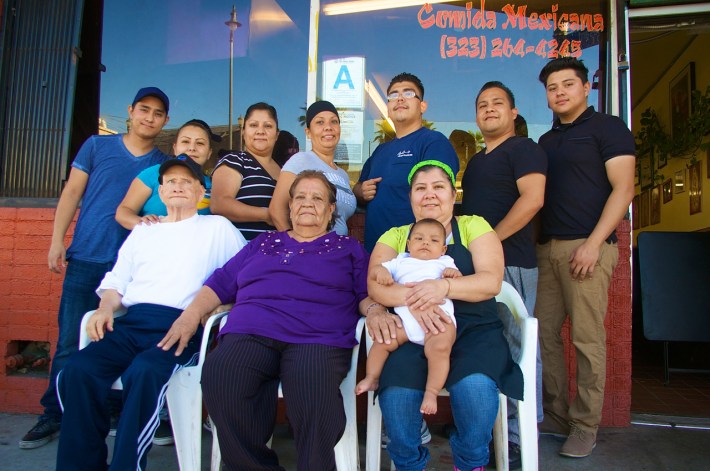
Thanks to the work of Aldo Medina of the East L.A. Community Corporation, who is working to organize the businesses and offer them technical assistance, Chris Pina who nurtures the growth of small businesses via Business Source, and Juan Romero, the owner of cafe Primera Taza, 1st st. will be hosting the equivalent of one very long block party. There will be food, music, art, live painting, food, outdoor tables and chairs, awesome people, and food.
Did I mention food?
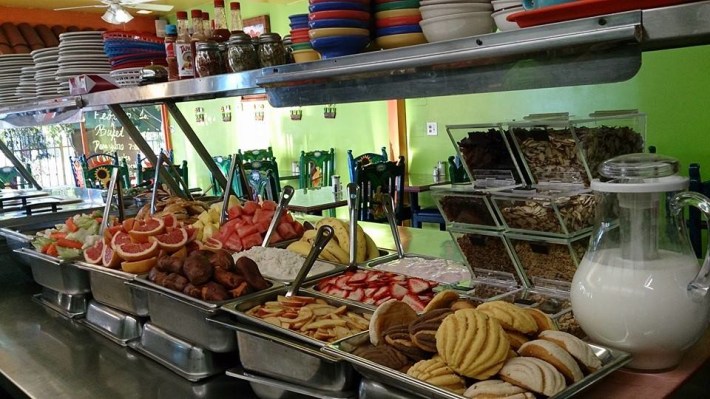
"I don't know if any other community has done this!" Pina said of the businesses' collaboration to showcase the street.
Romero concurred and spoke of the importance of drawing people from the hub at Mariachi Plaza into the community itself.
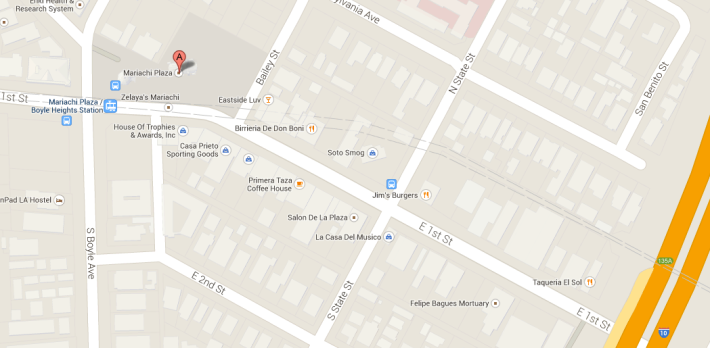
Always brimming with ideas for ways to bring activity to the area, Romero was one of the folks behind the Boyle Heights Farmers' Market and has been busy organizing a 5k Run/Walk and Munchkin Half-Mile, slated for Saturday, October 11. Taking advantage of a massive event like CicLAvia to "focus [attention] on the businesses...on the mom-and-pop shops" so they could build new connections while communicating what the area represented and had to offer, to him, was a no-brainer.
It apparently wasn't too hard to convince others of the potential value of the effort, either. Councilmember Jose Huizar's office is supplying the tables and chairs that will be set up outside the many restaurants that line the street between the plaza and the freeway to the east, and White Memorial Hospital is donating the decorative balloons. Renowned local artists Fabian Debora and Ray Vargas should be on hand to paint the walls of an alley across from Mariachi Plaza (next to La Serenata), while a DJ plays music.

Their goal is to entice you into taking a cultural and culinary voyage through Mexico and beyond. Considering what the street offers, that shouldn't be too hard.
The Food
What are you hungry for?
Pretty much anything you need can be found within just a few short blocks of Mariachi Plaza, including: ice cream, raspados, juices, and tortas at J&F Ice Cream shop (above); la carne en su jugo, el pipian (sauce), handmade tortillas, or la jericalla (flan) at Yeya's (Jalisco; Guadalajara); la cemita poblana de milanesa, huaraches, or pambazos at La Placita del D.F. (Puebla; Distrito Federal); a unique goat stew (birria) recipe served with tortillas, cilantro, and onion that Birrieria de Don Boni (Jalisco) has been serving since the 1970s; seafood, special sauces, and mole at La Serenata; quesadillas, juices, smoothies, and, of course, tortas, at Super Tortas Luisito; menudo, chicken mole, tortas, nopales, and the famous chilaquiles from Taqueria el Sol; bean and cheese burritos at Al & Bea's; coffee drinks, sandwiches, and salads at Primera Taza; the super-fresh vegetarian and vegan cuisine of Un Solo Sol's Latin American kitchen (food porn found here) or fresh tortillas or chips from Tortilleria San Marcos. (Note: some restaurants will have a reduced menu for CicLAvia).
Most of the restaurants are family-run, incredibly welcoming, and offer "casera" (home-style) cuisine, based in the recipes handed down to them through the generations. And because most of the owners have lived and/or worked in the area for decades, they take extra care with the food, knowing the people they are serving are their friends and neighbors.
Which is also the reason you may not have heard of most of these places -- they've largely relied on word-of-mouth advertising over the years. The 12-14 hours days most spend in their restaurants have left them little time for extra marketing or anything else.
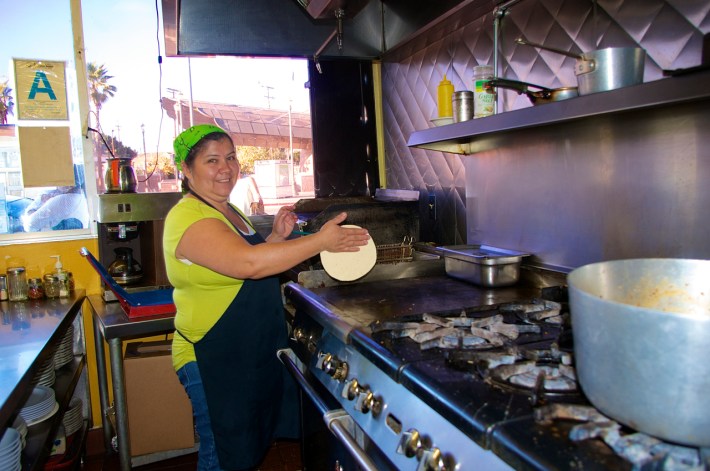
"It's a lot of work," Columba Gasca said in Spanish of the long hours she's kept for 11 years at La Placita del D.F. and the time it took to get the hang of running a small business. But being able to share her food and her heritage with the community -- especially those missing their home cuisines -- was really important to her, and she felt privileged to be able to do so.
Lupita Barajas of Yeya's (above) echoed her sentiments, gigglng with her nephew, Edgar Barajas (who helps out after school), about spending so much time at the restaurant that she can't wear any of the lovely perfumes family members have gifted her over the years.
"Food and perfume don't mix," she laughed
"Well, I wear the scent of Fruit Punch," Edgar teased.
But the long hours she puts in and the many years she had worked in other kitchens in the area had been key to their ability to get Yeya's off the ground. When they opened their doors in 2010, she said, they didn't even bother to do any advertising. People trusted her to serve them well. And she does.
It doesn't mean that they -- or any of the restaurants -- have had it particularly easy. Word-of-mouth is the best way to build a loyal base, but it is also an awfully slow one. So, all are hoping that CicLAvia participants will take the time to wander up the street and check out what their kitchens have to offer.
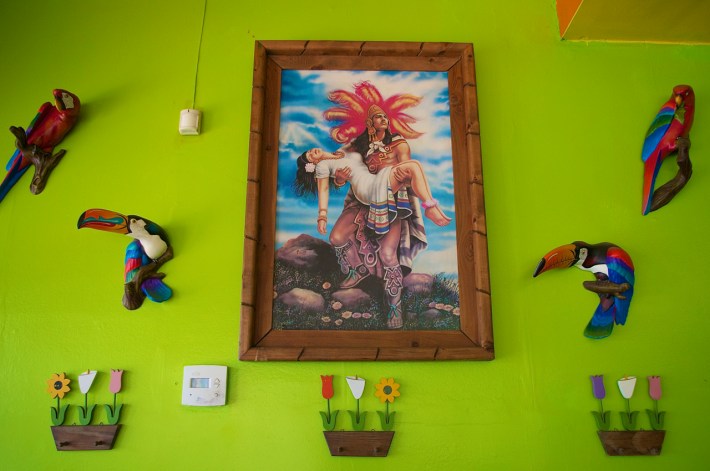
Once you've had your fill, they hope you will explore some of the other unique spaces and shops along the street.
The Arts
Two doors down from Mariachi plaza, Espacio 1839 -- home to Radio Sombra and a conscientiously curated gallery space/bookstore/music store/clothing shop steeped in the culture and history of the East Side and the struggles of the oppressed -- will have its own set-up, offering music, art, clothing, and thought-provoking conversation. Collective members Marco Amador, David Gómez, Elisa García, and Nico Aviña founded the space two years ago to provide a creative outlet for the community's needs, aspirations, and desire for social justice. The expertise each member brings -- Aviña as an artist, García as a former bookstore owner, Amador as a media maker and community organizer, and Gómez as a DJ -- and their shared commitment to both investing in those on the margins and giving them a voice makes the space feel urgent and alive.
Just east of the freeway, at Cummings, arts, education, action, and wellness collective Corazón del Pueblo will host an open mic and offer refreshments and t-shirts for sale. While you're there, peruse their eclectic calendar of workshops, which run the gamut from men and women's talking circles and spoken word open mic nights, to yoga, zumba, and bike fixing classes, to dance, musical, or theatrical performances. Amazingly, they've managed to do all this with an all-volunteer staff and without the support of grants since 2009. Rents being what they are, however, Corazón could use your help to keep their doors open. Revenues from their CicLAvia celebrations will go towards ensuring they can continue to offer free health- and healing-oriented workshops to the community.
Check out the nearby Casa 0101 Theater while you're there for upcoming film screenings and performance information for their next production -- Julius Caesar -- set to begin October 17.
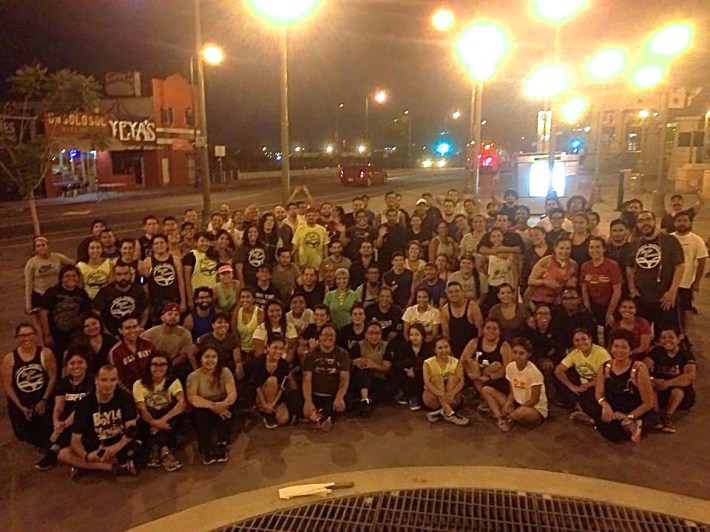
If you'd just like to get to know local personalities -- of which I assure you there are many -- take a stroll and stop in the open shops or find ones you'd like to come back to explore.
The Businesses
Peek inside Don Jorge Tello's Casa del Mariachi (1836 E 1st.) and get a sense of what it means to be a tailor to the stars. The Guatemalan native who learned the craft at an early age -- age 9, to be exact -- has been a tailor for the past 50 years. But it wasn't until he came to this country 30 years ago that he began specializing in "charros" (suits for mariachis). It (only) took him several months to learn how to do the specific detailing, he told me, but because he had had so few tools at his disposal in Guatemala, he was actually well-equipped to use the older pedal-driven sewing machines needed to do the intricate stitching and design work. His love of the craft, meticulousness, and extraordinary talent have paid off -- he's dressed most of the biggest mariachi stars as well as Placido Domingo and Carlos Santana.
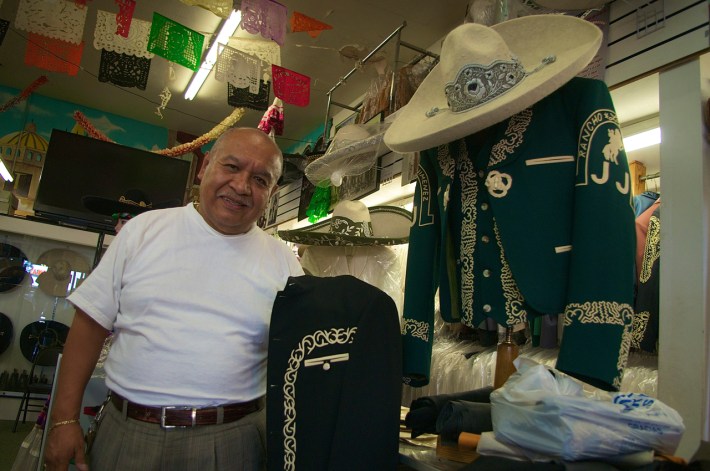
Or stop by the House of Trophies to relive your childhood memories of victorious triumphs and/or terrible defeats. Although normally closed Sundays, owner Saul González (pictured here, with Mayor Eric Garcetti) mentioned he might be open just to let people come in and poke around his shop, which is jam-packed with shiny trophies, plaques, and medals of all shapes, sizes, and materials.
Co-owner of the shop with business partner Dante Bullock, González has worked at the shop since he was 12 years old. A kid from the now-demolished Aliso Village housing development, he had needed the job to help support his family.
The business has changed a bit since the early days. In the 1990s, it split from Casa Prieto -- the family-run sporting goods store that has been in the community for 40 years -- next door. More recently, the recession and the loss of their biggest client -- the city's Department of Parks and Rec. in 2012 -- means the owners have had to up their involvement in all aspects of the business while cutting back on staff. But they've also worked to diversify their offerings, capitalizing on people's penchants for custom-made trophies -- fantasy football trophies and prizes for weird competitions (i.e. barbers vying for the best comb-over cut or trophies with sex toys on them for erotica contests). But their focus on building personal relationships with clients and the community has clearly remained consistent, as evidenced by the number of genuine hugs and hearty handshakes I saw given to clients while I was there and their donation of 400 medals to next weekend's 5K run to celebrate all the neighborhood kids they hope will participate in the event.

And while the Casa del Músico will likely be closed, you might want to press your face up against the glass and ogle some of the instruments, accessories, and awesome old vinyl records from around Latin America found inside.
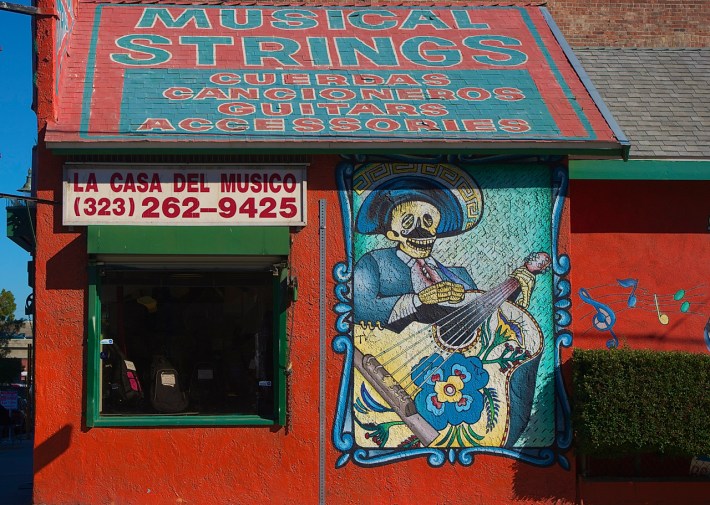
New owner Noel Jaramillo bought the business last year, much to the relief of the community, as it meant a shop that has been around for more than three decades would not be lost forever. Like any music store, it offers a wide range of instruments, accessories, sheet music, and the like. But this store, in particular, has been key to supplying mariachis from the area and beyond with quality instruments at affordable prices. In doing so, it has helped to keep the local mariachi tradition alive and allowed the music to reach a wider audience. Their customers now include professional musicians, youth who are studying with summer programs or following in their parents' footsteps (mariachi bands are often family affairs, with skills and songs being passed down through the generations), and a growing number of non-Mexican Americans who have come to love Mexican music.

Other notable personalities along the street include the owner of Pepe's Thrifty Shop, most notable, perhaps, because his name is not Pepe. It's Raúl.
Given the interesting things you might stumble across in his shop, the shop's name would have likely contained the words "vintage" or "salvage," were he to have been located on that other East Side. But here, in Boyle Heights, he serves a wide variety of customers and is happy to do so. He enjoys being able to find eclectic pieces and artifacts for customers that have the financial ability to add unique touches to a home. But he also wants to make sure that those in need of cheap appliances or household necessities -- beds, stoves, washing machines -- can get access to products that are cost-effective and that work well. He believes that selling a customer a defective product is a terrible way to do business, and more costly to him in the long-run. It's a philosophy that has kept him and his brothers -- one of whom is actually nicknamed Pepe, and all of whom own other Pepe's Thrifty Shops in other parts of the city -- successfully in business for decades.
Finally, you might want to stop in some of the general stores along the route, like the recently opened Belem's discount. The owner, who has worked for a number of the businesses along 1st St. over the past 20 years, finally decided it was time to open her own space to fill the needs that she felt were not being met. Or swing by the Corona Market (below) to meet recent transplants Daniel and Jane from San Francisco. They came down here looking to open a business that would allow them to retire. It's been a bit more of a struggle than they expected ("I work, I cry, I work, I cry!" Jane told me of the early days at the market). But they like the community, and like Belem, are incredibly friendly people.
Between the two shops, you're likely to find whatever it is that you needed and probably stuff you didn't know you needed, so stop by and say hello.
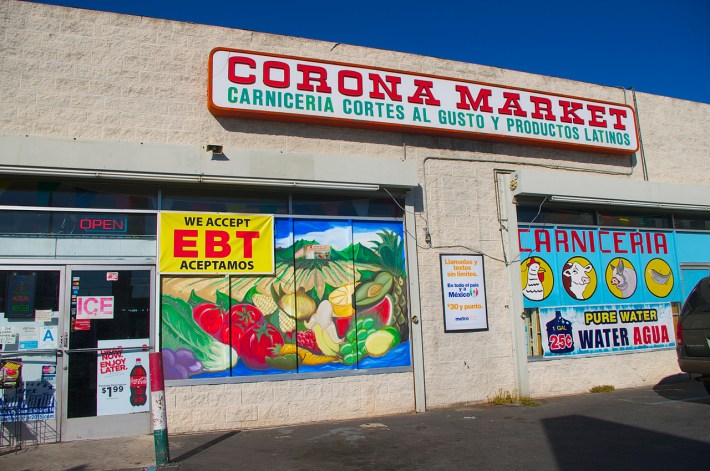
You may be wondering if it is not somewhat counter-intuitive to try to convince people to stop and spend so much time in one section of a 10-mile long route.
I agree -- it's an awful lot to expect.
But this CicLAvia may just be the perfect one for that approach.
As the mayor charts his vision for Great Streets and LADOT purports to implement that mandate via a more connected city, it becomes essential that we have an understanding of how the different neighborhoods around Los Angeles envision what it means for their own streets and communities to be "livable" or "great."
For the businesses I interviewed here, that vision was far more grounded in people than in infrastructure. Knowing their neighbors, having the trust of their patrons, feeling their culture and experiences were valued, and being surrounded by family were at the roots of what made them strong, secure, happy, and successful. That foundation was also what kept them motivated to do what they could do to keep the area feeling like a welcoming place.
In short, what makes the area "great" is the people and how they relate to each other. While their history of resistance, activism, and pride might beautifully captured on so many of the walls around them, those artifacts have little meaning without the presence of the people and cultures whose struggles they represent.
So, explore the architecture, check out the murals, and compare and contrast the sensory experiences of the neighborhoods you pass through. But take some time to stop and explore a few blocks, shake a few hands, share a meal, and hear a few stories, too.
* * * *
*The KPCC story on the CicLAvia meeting in East L.A. last month was a faithful description of the discussion, but my statement was taken out of context. I was summarizing some of what had been said before launching into a discussion of the possibilities for promoting the businesses along the route, taking ownership of the event, and showcasing the neighborhoods' unique visions of "community" and "livability."
**A phrase taken from a press release received from Sperry Van Ness regarding the purchase of a "distressed asset" (residential building) in MacArthur Park.
